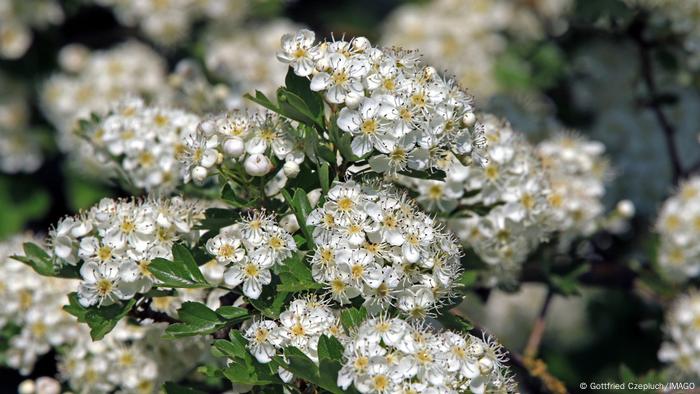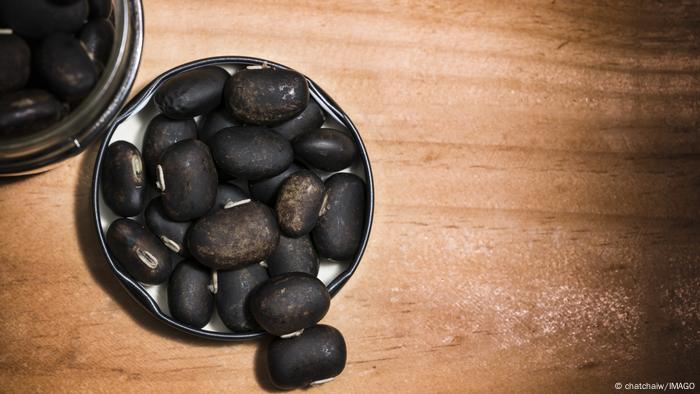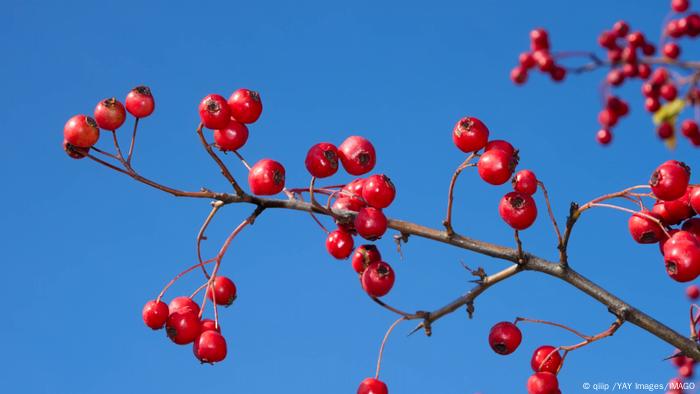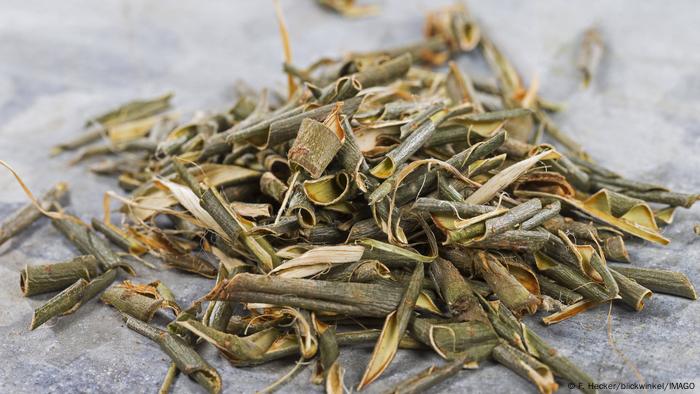Herbal medicines that really work
Medicines have been extracted from plants for thousands of years and new ones are still being discovered. Here are several plant extracts with robust medical benefits.

Drugs made from hawthorn tree berries could help treat cardiovascular disease
Humans have been extracting the healing properties of plants for thousands of years. Although herbal remedies are often discounted as unscientific, more than one-third of modern drugs are derived either directly or indirectly from natural products, such as plants, microorganisms and animals.
Now, researchers from the Scripps Research Institute in the US state of California have found that a chemical extracted from the bark of the Galbulimima belgraveana tree has psychotropic effects that could help treat depression and anxiety.
The tree is found only in remote rainforests of Papua New Guinea and northern Australia and has long been used by indigenous people as a healing remedy against pain and fever.
"This goes to show that Western medicine hasn't cornered the market on new therapeutics; there are traditional medicines out there still waiting to be studied,” senior author Ryan Shenvi, PhD, a professor of chemistry at Scripps Research, told reporters last week.
Which other medical drugs are found in plants?
The most well-known example of a medical drug extracted from a plant species is opium, which has been used to treat pain for over 4,000 years. Opiates like morphine and codeine are extracted from the opium poppy and have a powerful effect on the central nervous system.

Afghan farmers collect raw opium in a poppy field
But which other ancient plant-based medicines have demonstrable medical benefits, and what is the science behind them?
Velvet beans treat Parkinson's disease
The velvet bean (Mucuna pruriens) has been used in ancient Indian Ayurvedic and Chinese medicine for over 3,000 years. Ancient texts tell us how healers used bean extracts to reduce tremors in patients to treat the condition we now consider Parkinson's disease.
Studies now show that the velvet bean contains a compound called levodopa, a drug used to treat Parkinson's disease today.
Levodopa helps to stop tremors by increasing dopamine signals in areas of the brain that control movement.
The modern history of levodopa began in the early 20th century when the compound was synthesized by the Polish biochemist Casimir Funk. Decades later, in the 1960s, scientists found that levodopa could be used as an effective treatment to stop tremors in patients with Parkinson's disease. The drug revolutionized the treatment of the disease and is still the gold standard for its treatment today.

Velvet beans contain chemical to help treat tremors caused by Parkinson's
Hawthorn could be a future treatment for cardiovascular disease
The medical properties of hawthorn (Crataegus spp) were first noted by Greek physician Dioscorides in the 1st century and by Tang-Ben-Cao in ancient Chinese medicine in the 7th century.
Clinical trials using current research standards have found that hawthorn reduces blood pressure and may be useful to treat cardiovascular disease. Hawthorn berries contain compounds such as bioflavonoids and proanthocyanidins that appear to have significant antioxidant activity.
Hawthorn extracts aren't yet suitable for medical use in the wider public — studies are ongoing, and more rigorous research is needed to assess the long-term safety of using the extracts to treat diseases.

Hawthorn berries taste a little like small apples and their extracts could help treat heart or blood diseases
Pacific yew tree bark can fight cancer
Yew trees have a special place in medicine in European mythology. Most parts of the tree are very poisonous, causing associations with both death and immortality. The Third Witch in Macbeth mentions "slips of yew slivered in the moon's eclipse" (Macbeth Act 4, Scene 1).
But it's a species of yew tree in North America, the Pacific yew tree (Taxus brevifolia), that possesses the most beneficial medical properties.
Scientists in the 1960s found that the tree's bark contains compounds called taxels. One of these taxels, called Paclitaxel, has been developed into an effective cancer treatment drug. Paclitaxel can stop cancer cells from dividing, blocking further growth of the disease.

Pacific yew in the US state of Oregon
The wonder-drug sourced from Willow bark
Willow bark is another traditional medicine with a long history. The bark was adopted 4,000 years ago in ancient Sumer and Egypt to treat pain and has been a staple of medicine ever since.
Willow bark contains a compound called salicin, which would later form the basis of the discovery of aspirin — the world's most widely taken drug.
Aspirin has several different medical benefits, including pain relief, reduction of fever and prevention of stroke. Its first widespread use was during the 1918 flu pandemic to treat high temperatures.

Willow bark is generally found in the Northern Hemisphere
Edited by: Clare Roth
No comments:
Post a Comment